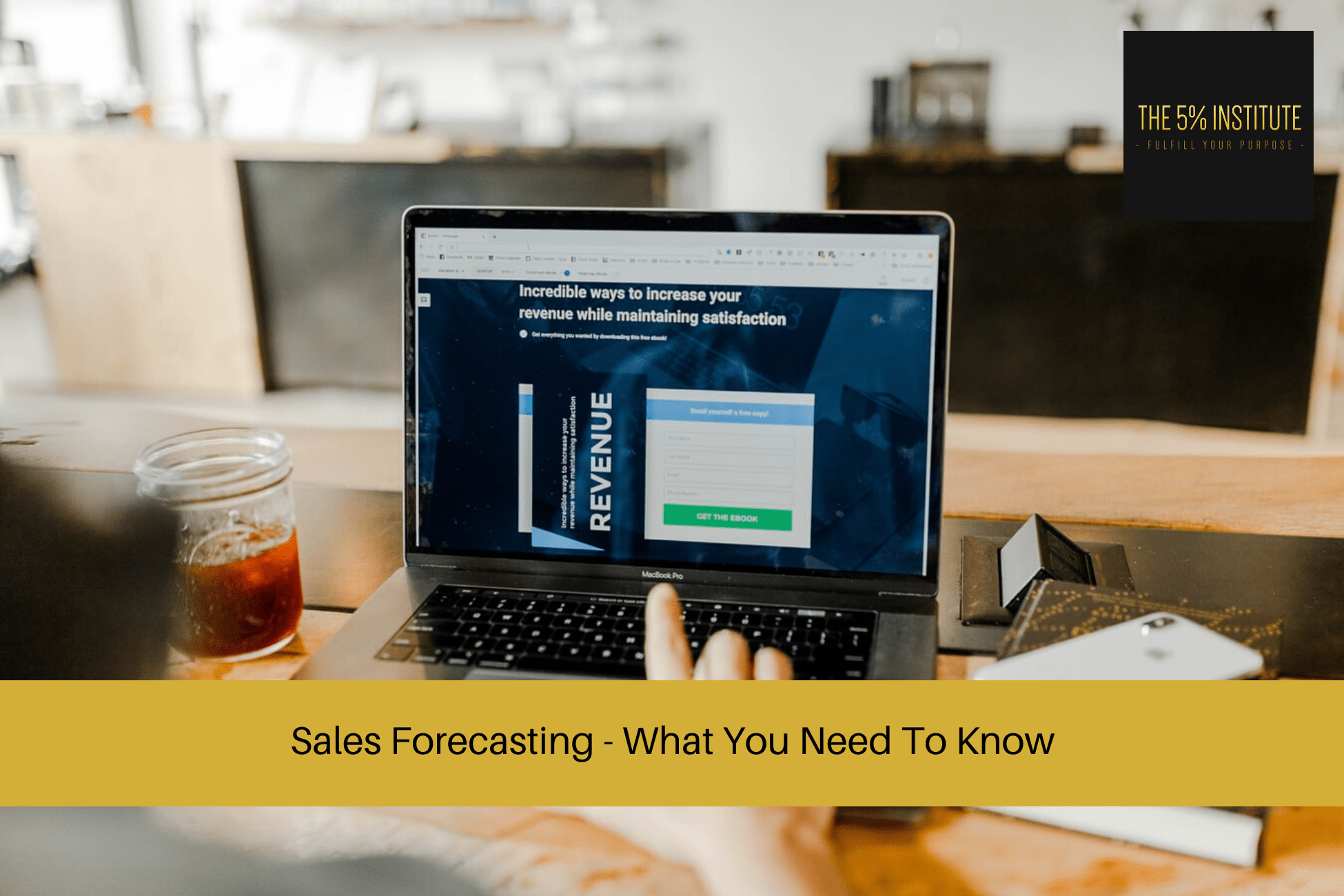
Sales Forecasting – What You Need To Know
Sales forecasting is one of the most important activities you can do as a Sales Professional or Business Owner.
But what exactly is sales forecasting – how do you do it correctly, and what are its benefits?
In this article, we’ll look at what sales forecasting is, the benefits of doing the activity, and how to do your sales forecasting correctly.
Sales Forecasting – What You Need To Know
What Is Sales Forecasting?
In simple terms; sales forecasting is predicting what a Sales Professional, a sales team or a business will make in future sales revenue.
By future sales revenue – this can mean in the next week, month, year, and furthermore.
However, sales forecasting isn’t to be confused with sales targeting, or goal setting.
Sales targeting is identifying your targets to make consistent sales, and goal setting is identifying what you would like to happen. Sales forecasting is actually predicting what you should make revenue wise.
Why Is Sales Forecasting Important?
An important part of your journey to be successful at selling and in business, is measuring what is working and what isn’t.
Sales forecasting allows you to pick up on this quickly.
For example; let’s say that you think sales are going well.
You’re expecting a certain amount of revenue next month, because for the last six months – sales have been consistent around an average number.
But all of a sudden – there’s a 30% drop in revenue.
What could it be?
Sales forecasting allows you to first identify if there’s a problem, and then secondly; try to measure and diagnose what the problem could potentially be to get yourself back on track.
Making sales predictions is an important part of any business, because it allows you to plan your other expenses ahead of time.
Sales forecasting allows you to then allocate adequate funding to your marketing spend, operational expenses, and other important budget allowances and overheads.
Your ‘Sales Forecasting Recipe’
Just like any good recipe, you need consistent ingredients in order to get a positive result.
The same is true for your sales forecasting.
There are a number of key things to measure, implement or slightly change if you wish to earn consistent and predictable revenue.
Below are some key ingredients to add to ensure your sales forecasting efforts are done correctly.
Your Sales Process
A sales process is one of the most important and fundamental parts of selling in general – and not just for sales forecasting.
However, it’s instrumental to diagnose your sales process if you’re having sales forecast issues, primarily if sales start dropping.
By using a sales process, you’ll have a step by step framework to guide you on how to win a sale; as well as take your potential client on a positive sales journey and experience.
If your sales are dropping off, review your sales process and try to understand which part of the sales process you or your team may be struggling with.
Although there are various types of sales process frameworks out there, we teach a sales process called The 5% Sales Blueprint. The steps we include are:
- Building rapport
- Setting a pre-frame and qualifying
- Asking questions to uncover pain
- Learning about their future state and desires
- Talking about the impact of money
- Presenting your solution
- Handling objections
- Asking for the sale
To learn more about the sales process, check out the related article below.
Related article: The Sales Process – A Step By Step Guide
Goal Setting
The first step prior to setting up sales forecasting, is identifying what it is in fact that you want to achieve.
Sales forecasting as mentioned, is the activity to measure how you’re performing and whether you’re still on revenue target.
Goal setting is done prior.
What do you want to achieve by when? What are your targets, and why?
Goal setting when done correctly, should involve both your logical reasons as well as emotional reasons as to why you want to achieve them.
When you’ve set up your goals, you’ll then be able to identify what forecast you need to bring them into fruition – and then adjust accordingly.
To learn how to set goals correctly, read the linked article below for more detail.
Further reading: How To Set Goals The Right Way – A Detailed Guide
Your Previous Metrics
How have you or your sales team performed in the past?
A key indicator as to how your revenue is going to perform in the future, is how it’s been tracking in the past.
This doesn’t necessarily mean you should become redundant to keeping an eye on things, as markets constantly change, and you always should be tracking and keeping an eye on your numbers.
As Peter Drucker once famously said, “If you can’t measure it, you can’t manage it.”
In saying that, how would you expect things to be drastically different in the future, if your past numbers are giving you something different?
Change can only happen, if you change something operationally and sales wise within your business.
If your sales revenue has been consistent for a few months, and then things drastically change – or slowly start dropping consistently; then it’s time to diagnose the elements of your sales process, goals, internal processes, and potential environmental factors. These will all help your sales forecasting efforts.
Current Sales Metrics
Past metrics are important; however, your current sales metrics should be focused on too.
Sales metrics can show you efficiency, as well as potential opportunities to improve upon and give your focus.
Examples of metrics to monitor include:
- The lifetime value of a customer
- Sales revenue
- Your retention rates
- The cost of acquiring a customer
- Your operational costs and overheads – are they all justified?
- How long does it take to close a deal?
- Your on boarding processes
- Your average conversion rate per conversation
- Cost per lead
Final Thoughts
Sales forecasting is an important sales activity, because it’s crucial to predict what you’ll be making in the future based on your past and present activity.
By measuring your previous monthly, quarterly and annual revenue, you can tweak your sales process and other elements to drive growth and prevent sales stagnation and revenue loss.
Prior to starting your sales forecast activity, it’s important to measure the current sales metrics mentioned in this article.
It’s also important to note; sales forecasting works by continually looking for new opportunities, diagnosing what’s working and what isn’t, and having and implementing a mindset of continual improvement.
Have anything else to add? Feel free to share in the comments!
Want To Close Sales Easier?
Are you committed to closing sales a lot easier, and consistently?
If so, you should check out our self-paced and affordable online sales training program; The 5% Sales Blueprint.
It’ll give you everything you need to close sales consistently.
To learn more, simply click on the link below for more information.
Our Online Sales Training Program – The 5% Sales Blueprint.



